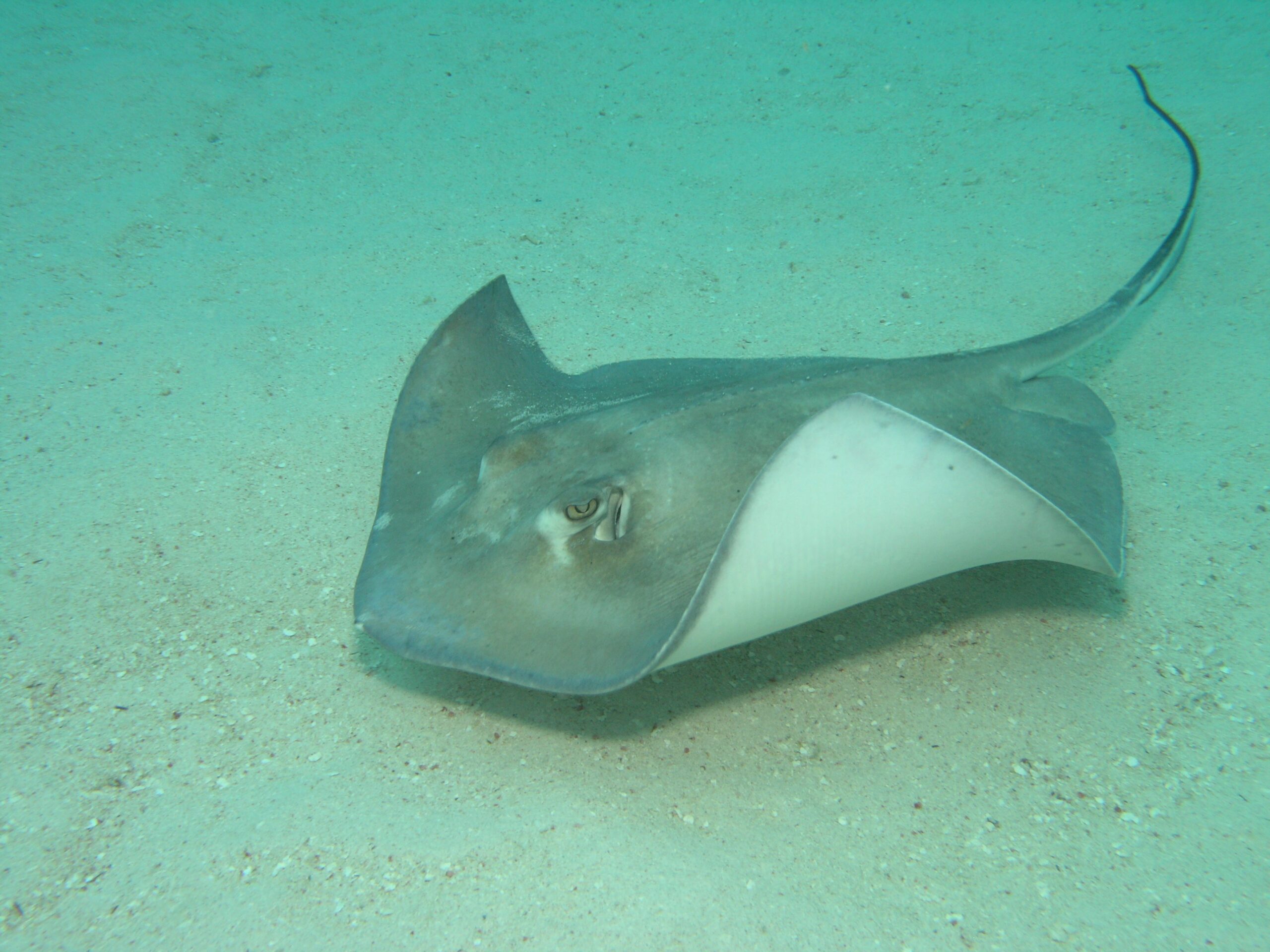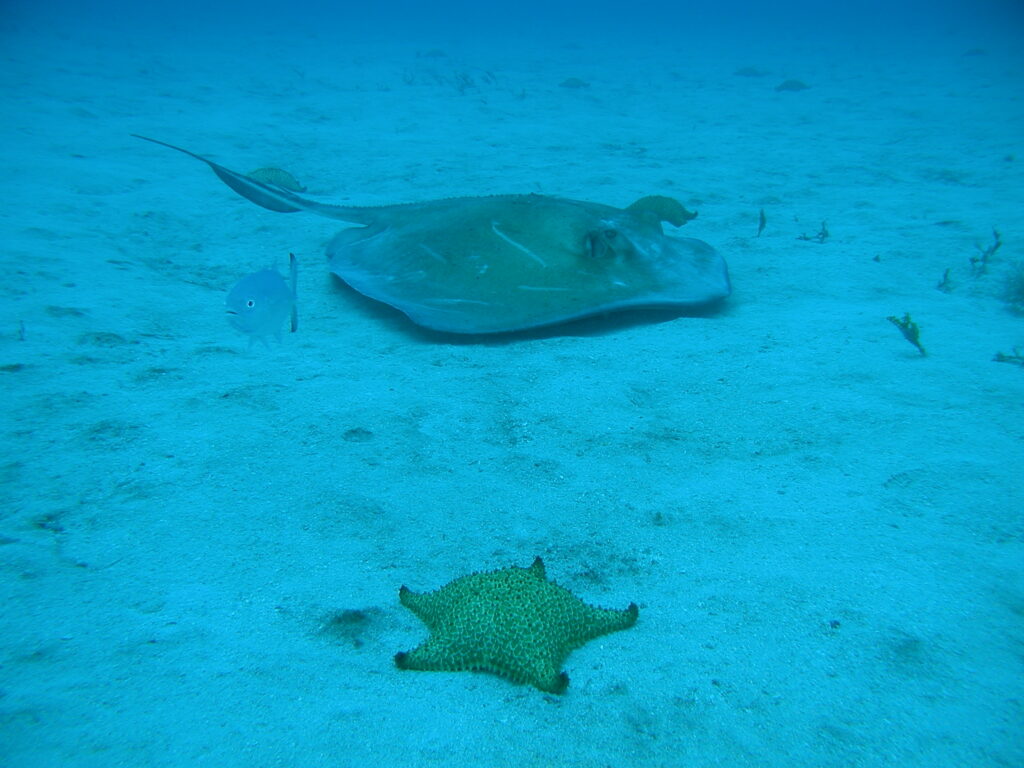Stingrays going extinct?
Stingray populations are shrinking at a troubling rate, and this decline poses a major threat to ocean ecosystems. The reasons for their decreasing numbers are complex and closely connected, with human activity at the center of the problem. Overfishing removes stingrays faster than they can reproduce, while the destruction of coastal habitats such as coral reefs and mangroves takes away the spaces they need to feed and breed. Climate change adds more stress by warming the oceans and disrupting food sources. On top of that, the demand for stingray body parts in certain markets encourages further hunting. All of these pressures work together, making it harder for stingrays to survive and pushing these unique animals closer to extinction. Ten stringray species are listed as severely endangered by the IUCN. Among them are the wingfin stingray, smalltooth stingray, and shorttail whipray. Similar to marine mammals, entanglement and vessel strikes pose a threat to stingrays. Because stingrays grow and reproduce slowly, many species are at risk of overfishing, and fishermen also target them.
What is wrong with overfishing?
A vital component of marine food webs, the Class Chondrichthyes, which includes sharks, rays, and chimeras, is an ancient group of fishes that has survived five global extinctions over 420 million years. According to a global IUCN study, at least 17% of the 1,041 known species are in danger of going extinct, and estimates indicate the number might reach 25%. Since there was insufficient information available to properly assess their danger, over half of the species were categorized as Data Deficient. Although there has been considerable success in establishing trade restrictions and fishing limitations, these measures are still unfair, only cover a tiny portion of species, and frequently do not meet scientific guidelines.
The largest sharks and rays, particularly those found in shallow areas that are accessible to fisheries, are the most endangered. The “fin trade” is a specific issue; in some Asian nations, shark and shark-like ray fins are considered a delicacy, and over half of the chondrichthyans that are traded in the fin trade are endangered. Sharks and rays are utilized to supply a market that is mainly unregulated and unmonitored, whether they are targeted or captured by boats fishing for other species. Significant risks also come from habitat loss and degradation, especially for freshwater sharks and rays.
But their habitat?
Another significant contributing element to the stingray extinction catastrophe is habitat loss. Important ecosystems, including seagrass beds, mangroves, and coral reefs (where stingrays graze, spawn, and seek shelter), are destroyed by coastal development, which includes building, dredging, and landfill construction. The waters these creatures rely on are also contaminated by pollutants that run off from land-based activities like sewage, industrial discharge, and agricultural waste. Water quality may deteriorate as a result of this pollution, endangering the health of stingrays and affecting their food supplies.

Why do humans need them?
We need Chondrichthyes (rays and sharks) as their contribution to providing life-sustaining resources and services is something we are just now starting to understand. Some species function as carbon sinks or preserve carbon sequestering habitats, such as mangroves, while others aid in the fight against climate change by cycling nutrients around the ocean. Food security in vulnerable coastal communities is supported by them. Fishermen have stated that shark and ray fisheries account for almost 80% of their income in several poor countries.
Stingrays are essential to the health of oceans because they regulate the numbers of animals that live on the bottom, help keep marine food webs in balance, and serve as natural “gardeners” by moving seafloor sand, which recycles nutrients and sustains coral reefs and seagrass meadows. Additionally, they serve as food for larger predators like sharks, so the entire food chain would be upset if they were to disappear. Beyond ecology, tourist activities like diving and snorkeling excursions help stingrays sustain coastal economies. In order to maintain marine biodiversity, productive environments, and the communities that rely on ocean resources, they must be protected.

Works Cited
International Union for Conservation of Nature (IUCN), https://iucn.org/. Accessed 22 September 2025.
“Extinction risk and conservation of the world’s sharks and rays.” eLife, 21 January 2014, https://elifesciences.org/articles/00590. Accessed 22 September 2025.
International Fund for Animal Welfare. “15 of the Most Endangered Animals in the Ocean.” IFAW, 19 July 2024, www.ifaw.org/journal/15-of-the-most-endangered-animals-in-the-ocean.